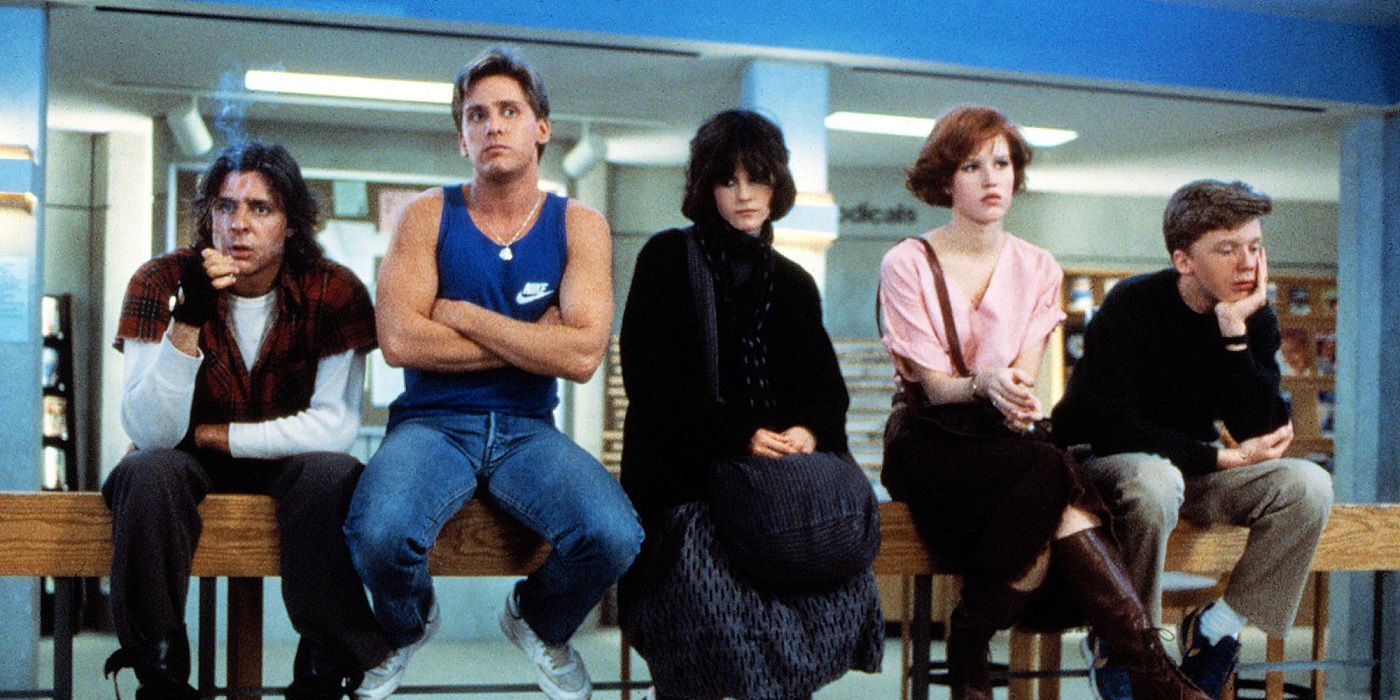
Praised as a quintessential piece of '80s cinema and highly regarded among the greatest high school movies of all time, the legacy of The Breakfast Club had endured due to the film's eclectic cast of teenage archetypes.
John Hughes' characters weren't just derivative personalities found in the everyday, run-of-the-mill teen comedy. From Claire's social pressures as the pretty girl with the rich father to Bender's abusive relationship with his own dad, the cast were rooted in genuine human problems.
On the cusp of adulthood, Hughes' film took place in a singular location over the course of a day. Working with a $1 million budget, the reflective character study was an endearing portrait of adolescence, simplistic in its approach but emotionally rich in its contrasting, multi-dimensional views of each personality.
It was the youthful talents and chemistry of stars Molly Ringwald, Emilio Estevez, Judd Nelson, Ally Sheedy, and Michael C. Hall that truly breathed life into the drawn-out conversations of Hughes' script.
It wasn't an easy road to the making of The Breakfast Club. At first, Hughes was turned down by Universal, who couldn't see the appeal of the stripped-down, brutal honesty of the characters. For all its cliches, the film has lasted through the generations, with newer directors calling it an inspirational work. Still, there's a lot behind the making of the movie that isn't known by even the biggest Hughes fans.
Follow us as we take a look at 23 Crazy Details Behind The Making Of The Breakfast Club.
23 It Wasn't Always Called The Breakfast Club
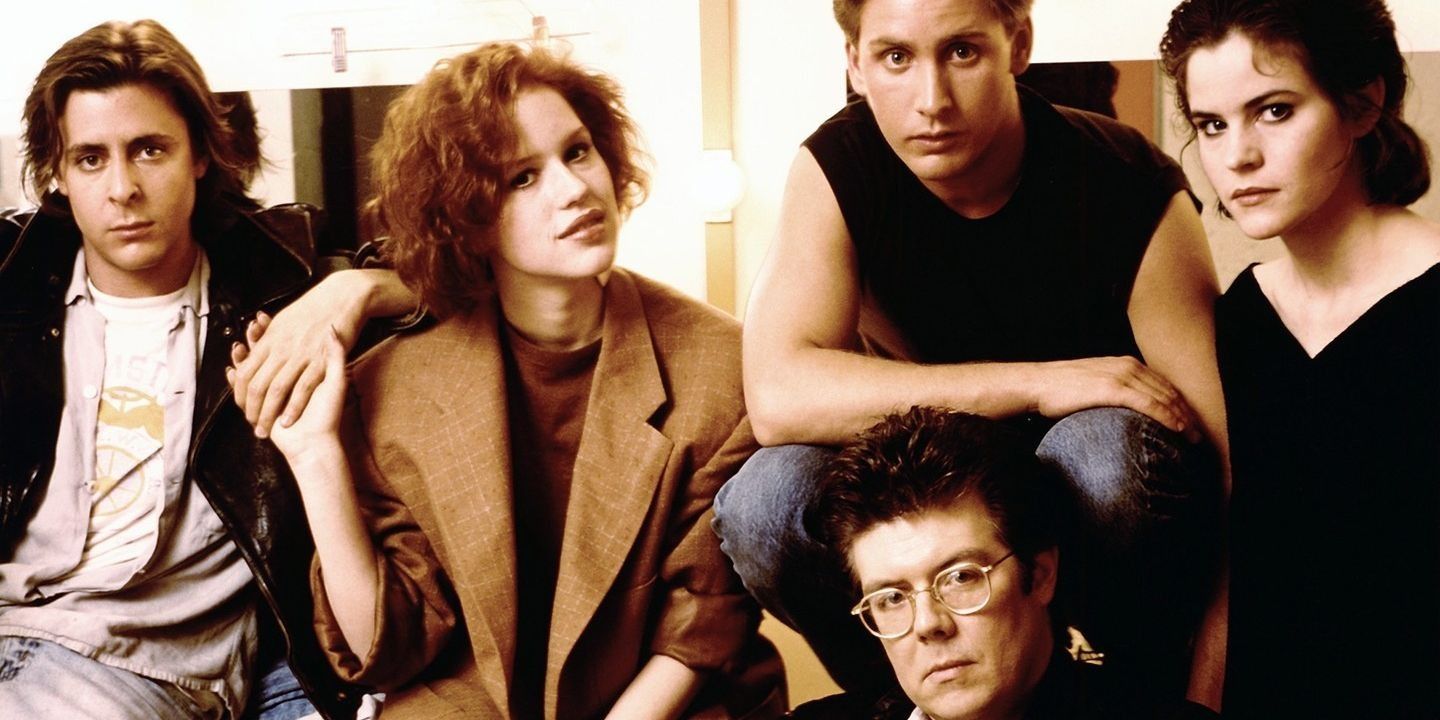
According to casting director Jackie Burch, the original script went under the name The Lunch Bunch. Thanks to the son of one of Hughes' friends, who attended New Trier High School in Northfield, Illinois, the name was changed.
As the story goes, sometime during New Trier's school history, the students and staff created the designated "Breakfast Clubs" for early detentions. Hughes, having attended school in Illinois, gravitated towards the newer title.
New Trier would also play a prominent role in many other '80s teen dramas, serving as a shooting location for films such as Sixteen Candles, Ferris Bueller's Day Off, and Weird Science.
22 Each Cast Member Took Part of the Library Banister as a Souvenir
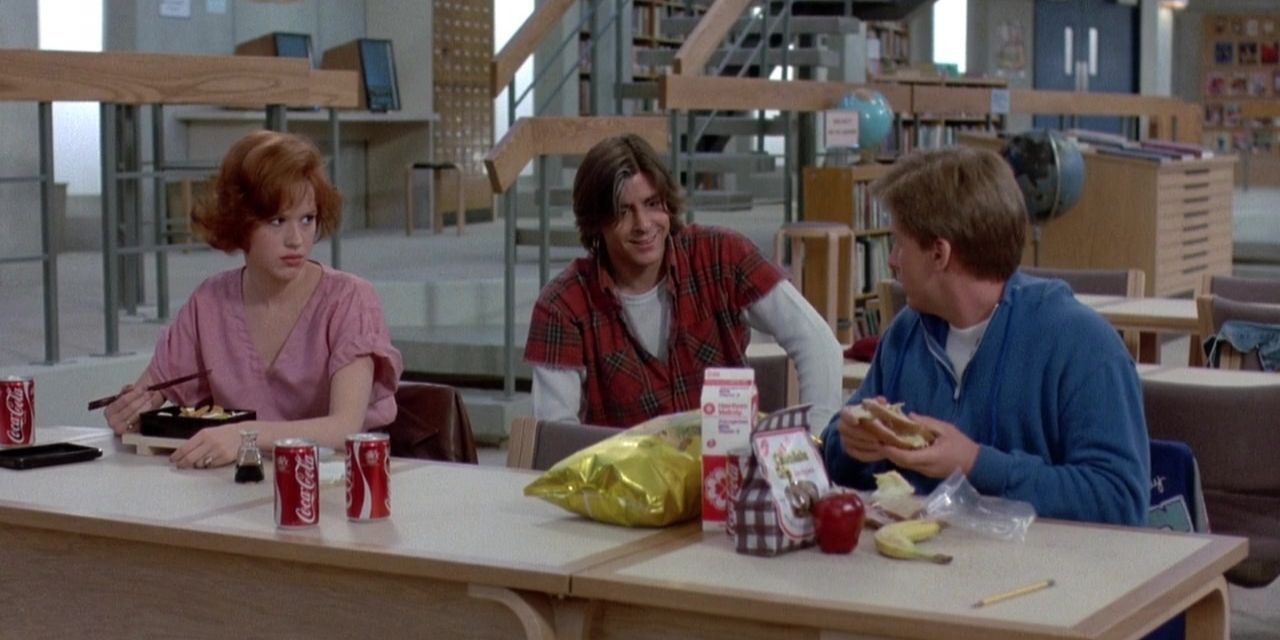
Thrust into the rigorous working schedule of Hollywood, the cast of The Breakfast Club have since admitted they were pampered during the shoot.
Given the opportunity to joke around on set as well as ad-lib many of their lines, they shot the film entirely in sequence-- a method which is unconventional by today's standards.
Speaking to the resonating universal themes of the movie during a commemorative thirtieth anniversary interview with USA Today, Ringwald fondly recalled having a blast filming her sophomore feature with Hughes. Like many of her co-stars, she became so acquainted with the cast that it was to say goodbye.
To make the last day of shooting easier, Hughes gave each actor a part of the library's banister as a keepsake to remember the experience, a souvenir which now seems odd in retrospect.
21 A Deleted Scene with Claire and Allison ReSurfaced After 30 Years
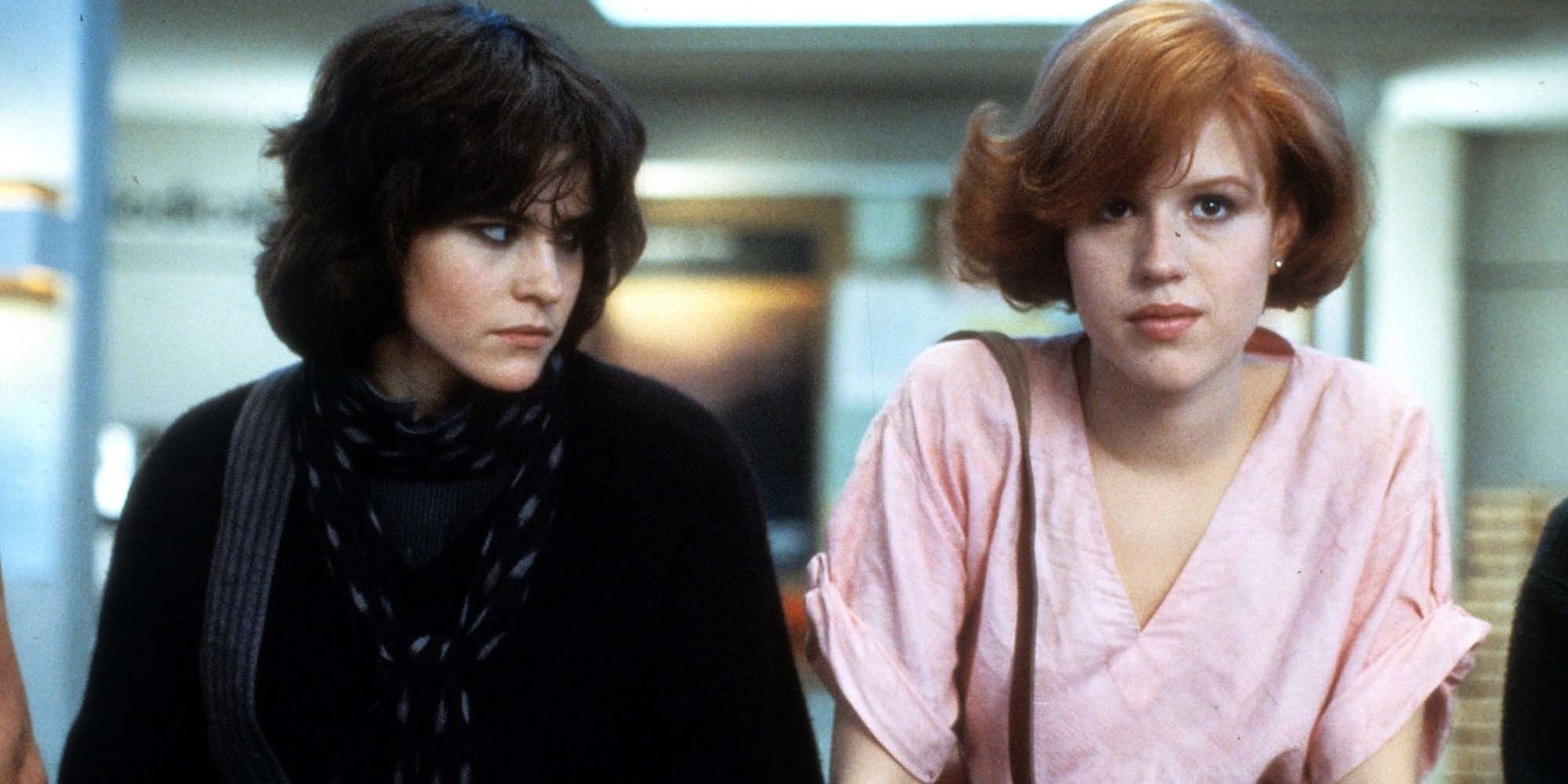
In October 2017, the prestigious home video distribution company known as the Criterion Collection announced that The Breakfast Club would join its list of titles, receiving a 4K digital restoration as well as over fifty additional minutes of footage which would be included as part of the bonus features. Reserved for historically and culturally important films, both classic and contemporary, Criterion's Blu-Ray release did not disappoint.
In one deleted scene featured on the release, Claire and Allison can be witnessed sharing a brief moment inside the women's restroom.
As Allison washes her hands, Claire attempts to start a conversation regarding Allison's odd choice of eating potato chips while only a few feet from a live toilet. Disregarding her question, Allison picks up a chip from inside the sink and eats it before leaving the room.
20 The Movie Helped Establish the Brat Pack
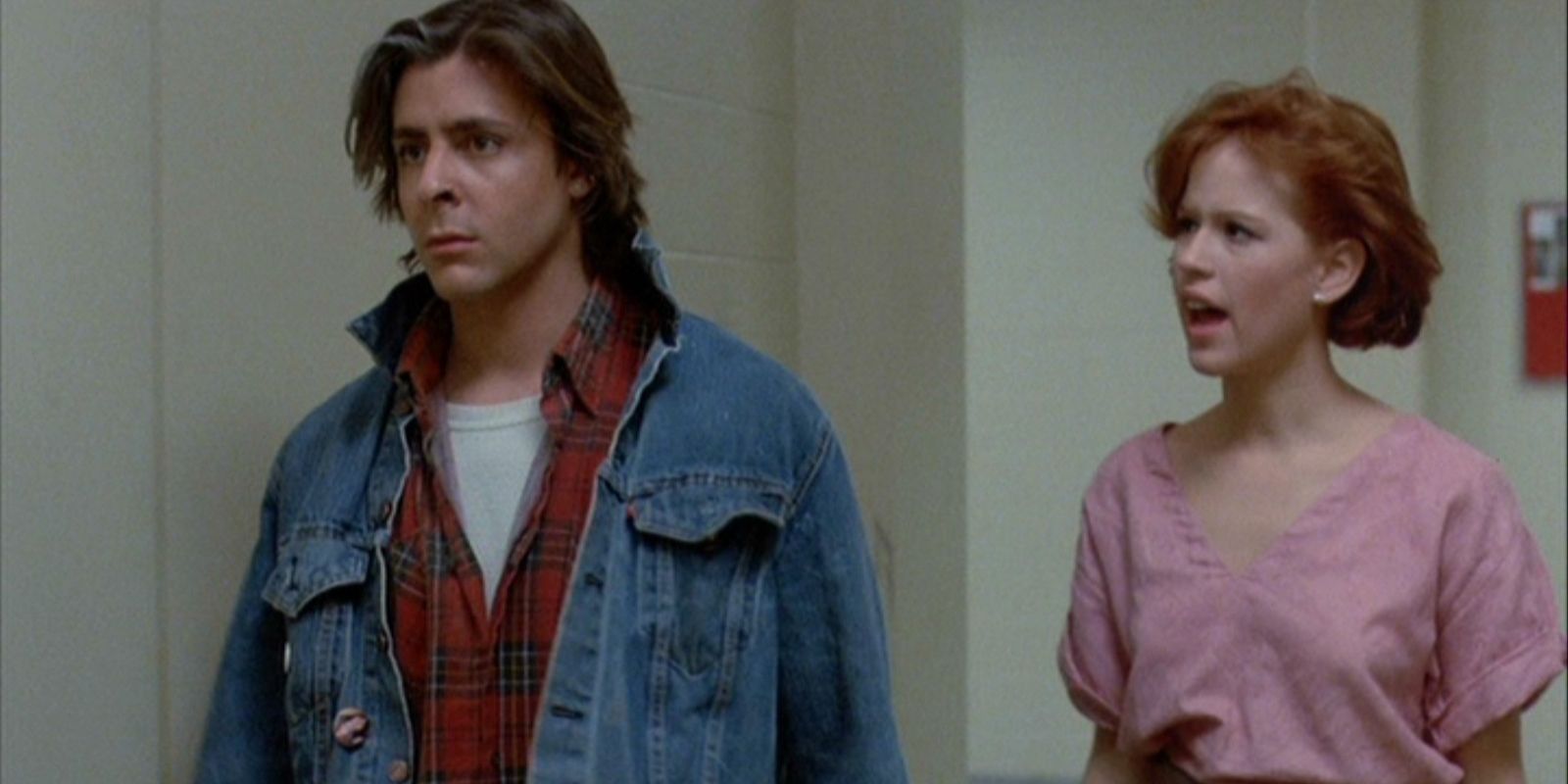
In the spring of 1985, New York Magazine writer David Blum was asked to follow rising star Emilio Estevez for a profile.
The article was supposed to focus on Estevez's career. Instead, it gave birth to a new nickname.
After Blum witnessed Estevez trying to get a free ticket to an 8 P.M. screening of Ladyhawke, he observed a sense of entitlement in the young actor. He would later observe the same attitude in many other young stars, coining the term "Brat Pack."
Although Blum's umbrella term became synonymous with the group which included members such as Estevez, Rob Lowe, Judd Nelson and Molly Ringwald, its origins really began with The Breakfast Club, which was the first film to star multiple members.
19 Anthony Michael Hall Hit a Serious Growth Spurt on Set
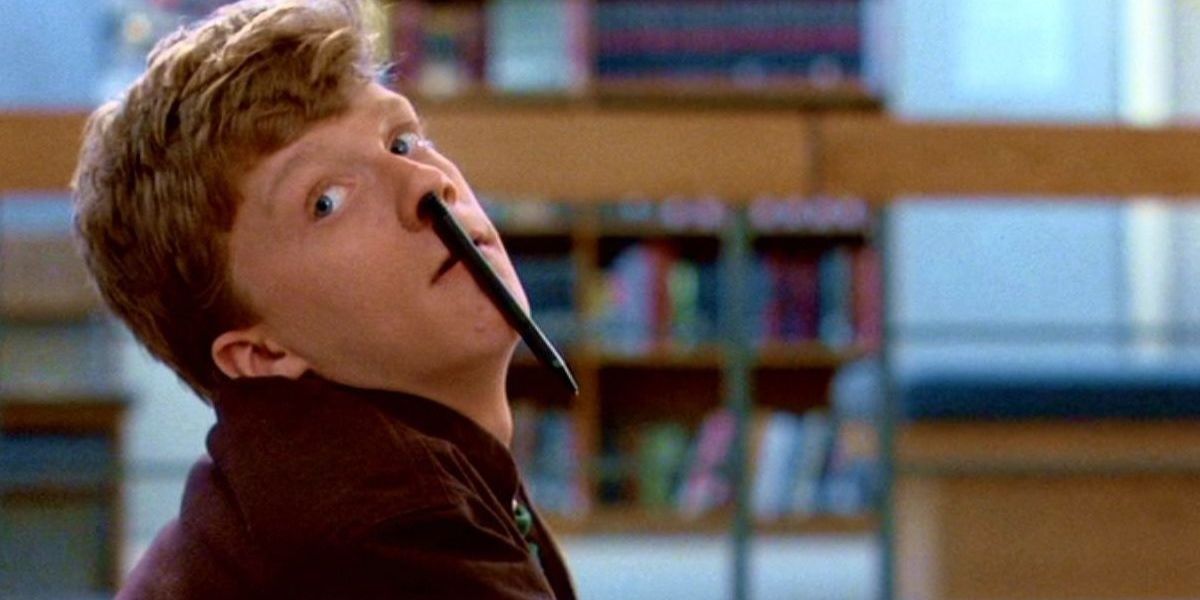
As the only actors on set actually within the age group of their characters, sixteen year olds Anthony Michael Hall and Molly Ringwald reportedly became so inseparable during production that they briefly dated while shooting. The other cast members were already into their early twenties by the time filming commenced. Both Emilio Estevez and Ally Sheedy were already twenty-three years of age and Judd Nelson topped everyone at twenty-four.
Recalling the formative years of his red-haired, freckle-faced co-star, Nelson spoke of Hall's surprising growth spurt during shooting. According to commentary on the 30th anniversary edition of the film, Nelson remembered being two inches taller than Hall during auditions and a half inch taller during rehearsals.
Sometime during shooting, Hall had outgrown Nelson, who jokingly stated that he began "writing letters to geneticists."
18 The Cast Suffered From Extreme Heat Exhaustion
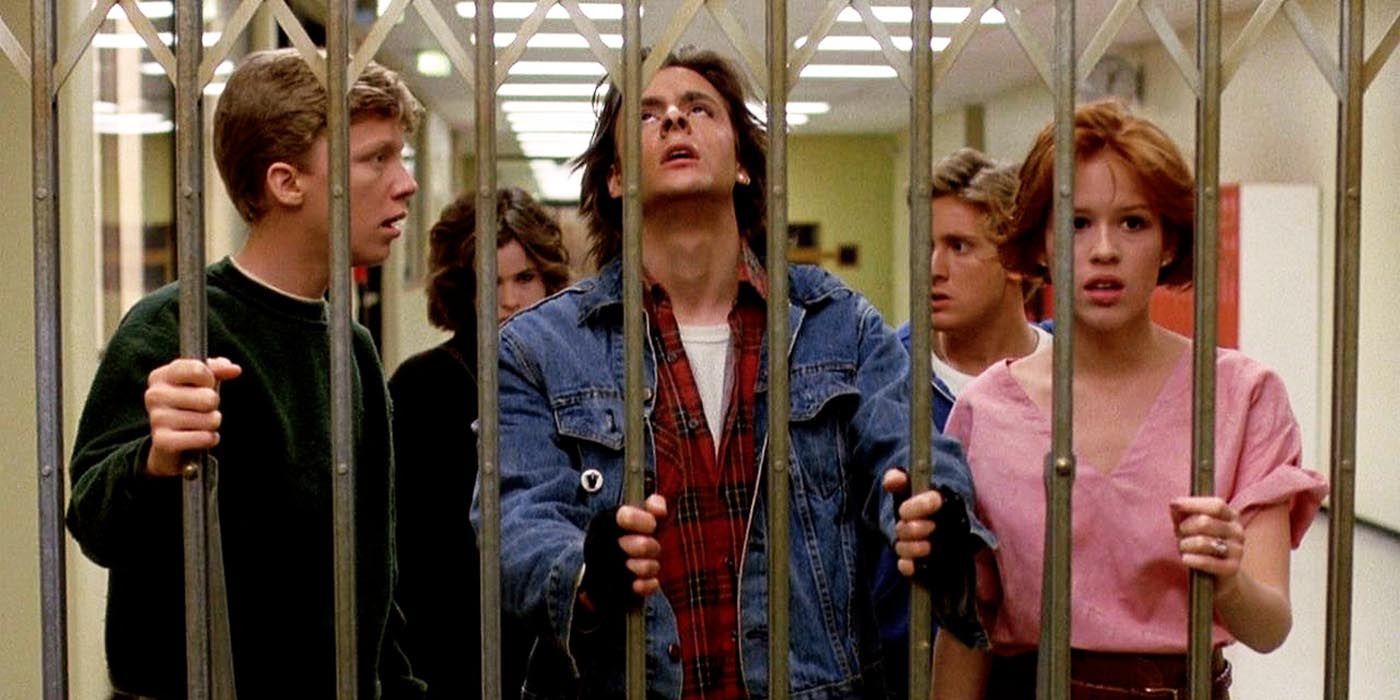
Pioneering the idea of the "kids around the lunchroom" format, cinematographer Tom Del Ruth was among the crew members responsible for capturing the opposing stereotypes of The Breakfast Club's cast.
On a closed set, Del Ruth captured the imaginations of youths by providing a suffocating atmosphere, which he fondly remembers as a critical element during the movie's pivotal scene in which each member shares their detention stories.
Shot in a two story library, the lighting played an instrumental part in the film, though Del Ruth recalls extreme heat from the lights causing tremendous problems for the cast.
In the upstairs portion of the library, temperatures would vary from 95 to 110 degrees, causing heat exhaustion to the point that the cast fell asleep.
In response, two additional assistant directors were hired specifically to keep the young cast awake.
17 The Female Stars Had A Tasteless Scene Removed
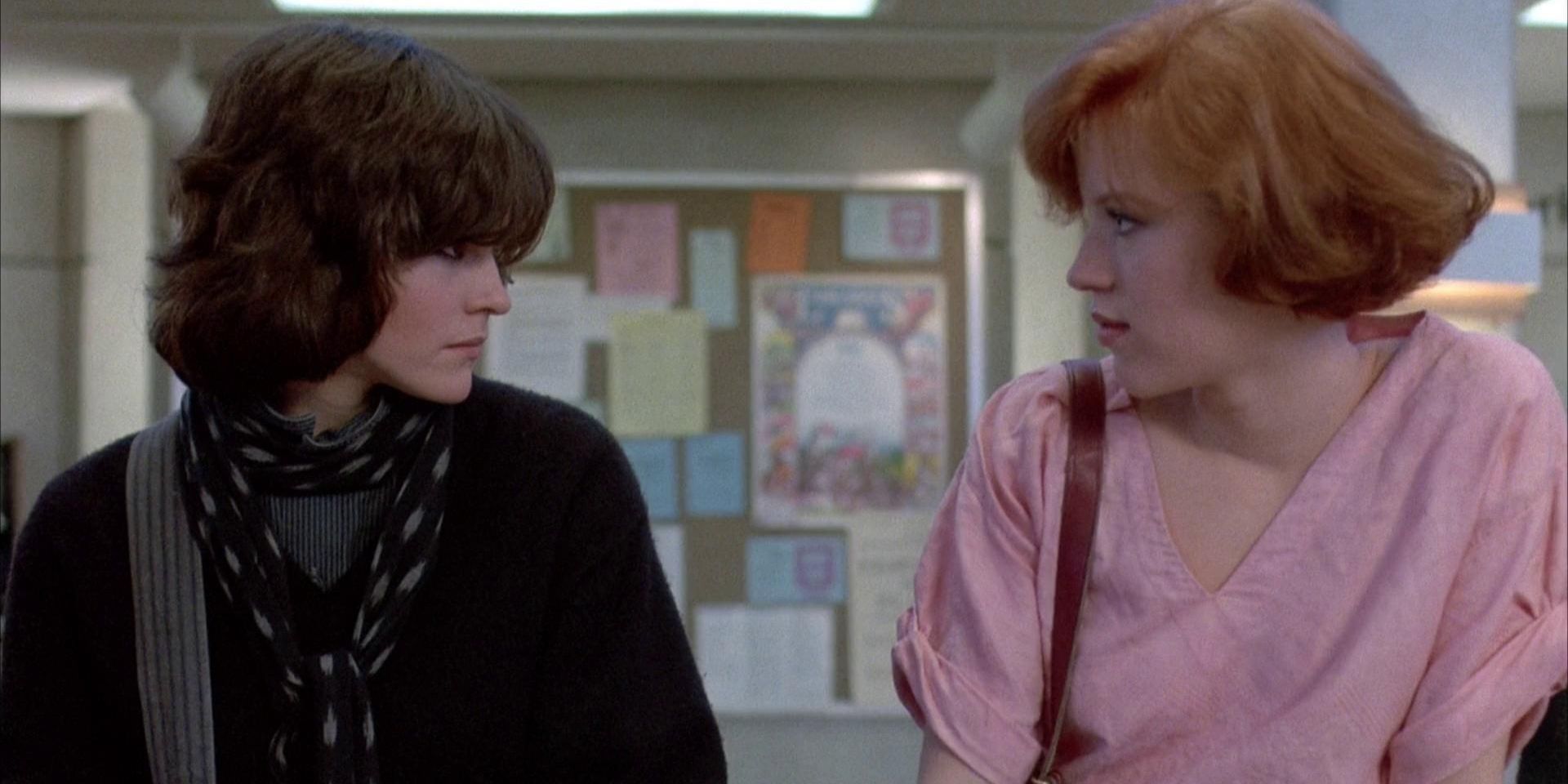
Getting his start as a staff writer for National Lampoon, John Hughes was an provocateur who understood that gratuitous scenes equaled box office success.
When he first pitched the concept for The Breakfast Club, Universal couldn't grasp how a film about kids in detention would draw much interest. Intent on critiquing the R-rated teen comedy formula, Hughes worked to make his sophomore effort a more relatable project, though the initial screenplay reportedly contained some remnants of his Lampoon days.
According to both Molly Ringwald and Ally Sheedy, the original script had a Porky's style scene in which the boys sneak off to peek in on the high school's synchronized swim team, stumbling upon a topless P.E. teacher along the way.
When the actresses confronted Hughes about the misogynistic sequence, he listened, cutting it from the movie altogether.
16 Bender's Blonde Joke Was Never Given an Ending
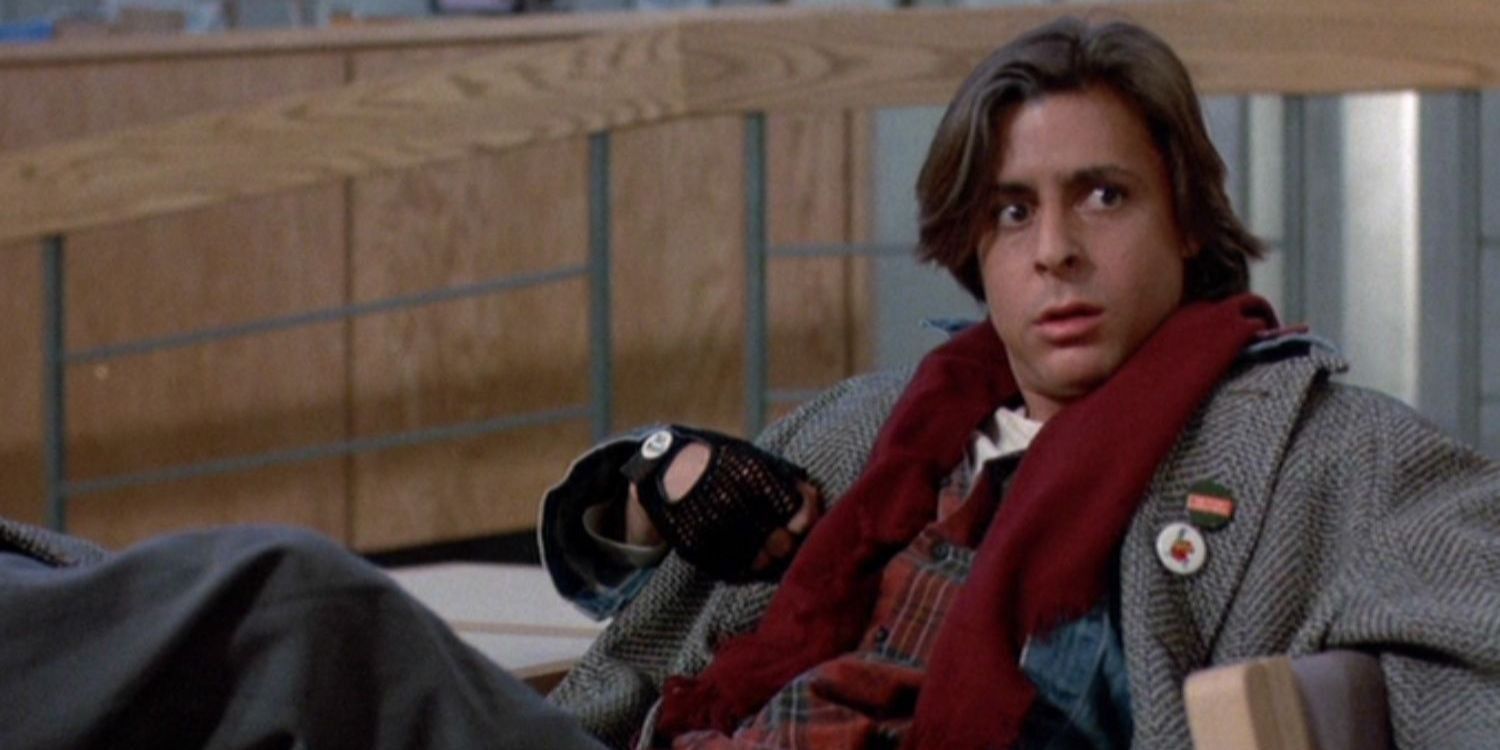
As the stereotypical, rebellious bad boy with no respect for authoritarian figures, John Bender was the anti-hero of the group whose reckless abandon and joking mannerisms directly clashed with the no-nonsense ways of Vice Principal Vernon.
Given the freedom to ad-lib his lines, Judd Nelson let loose on set, injecting much of his own personality into the character, including one scene where he was asked to tell a joke.
While crawling his way through an air duct, Bender entertains himself by remembering a joke about a blonde, a poodle and a six foot salami, but before he can deliver the punchline, he abruptly falls through the ceiling.
Since the joke was never in the script, it has remained unfinished, though many Reddit users have tried their hand at giving it a proper ending.
15 The Cast Went Undercover at a Real High School

To capture the authenticity of suburban high school life, John Hughes pulled a 21 Jump Street when he encouraged the cast to go undercover as students at Glenbrook North High School in Chicago's northern suburbs, where Hughes attended school in his youth.
Things escalated quickly when Nelson's wild antics got out of hand.
Speaking to The Wall Street Journal, Nelson remembered playing the role so convincingly that the students all believed he was much younger than his age.
Telling some teens he was underage, he used a "fake ID" to buy them beer in exchange for a ride to his hotel. When asked about the hotel, Nelson responded by saying his father was in prison and that he was "staying at the Westin O’Hare."
14 A Lot of the Dialogue Was Improvised
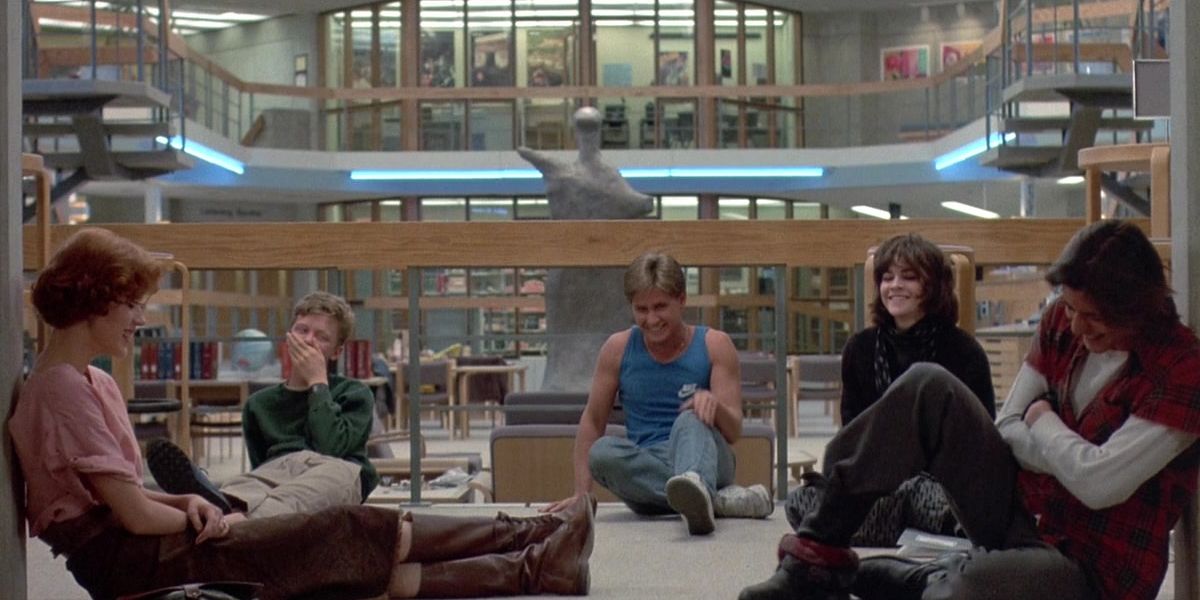
Thirty-five years old at the time of production, Hughes may have been nearly two decades removed from his senior year of high school, but he was no novice when it came to teenagers.
Encouraged to ad-lib their dialogue, the cast brought out sincere aspects of their characters through their own personal experiences. According to the actors, the most crucial moment of improvisation came when they were asked to tell their own detention stories in one of the film's most iconic scenes.
Likewise, Nelson was known for coming up with stuff on the spot, including his ultimate insult phrase "Neo-Maxi Zoom-dweebie."
13 Simple Minds Almost Never Sang "Don't You (Forget About Me)"
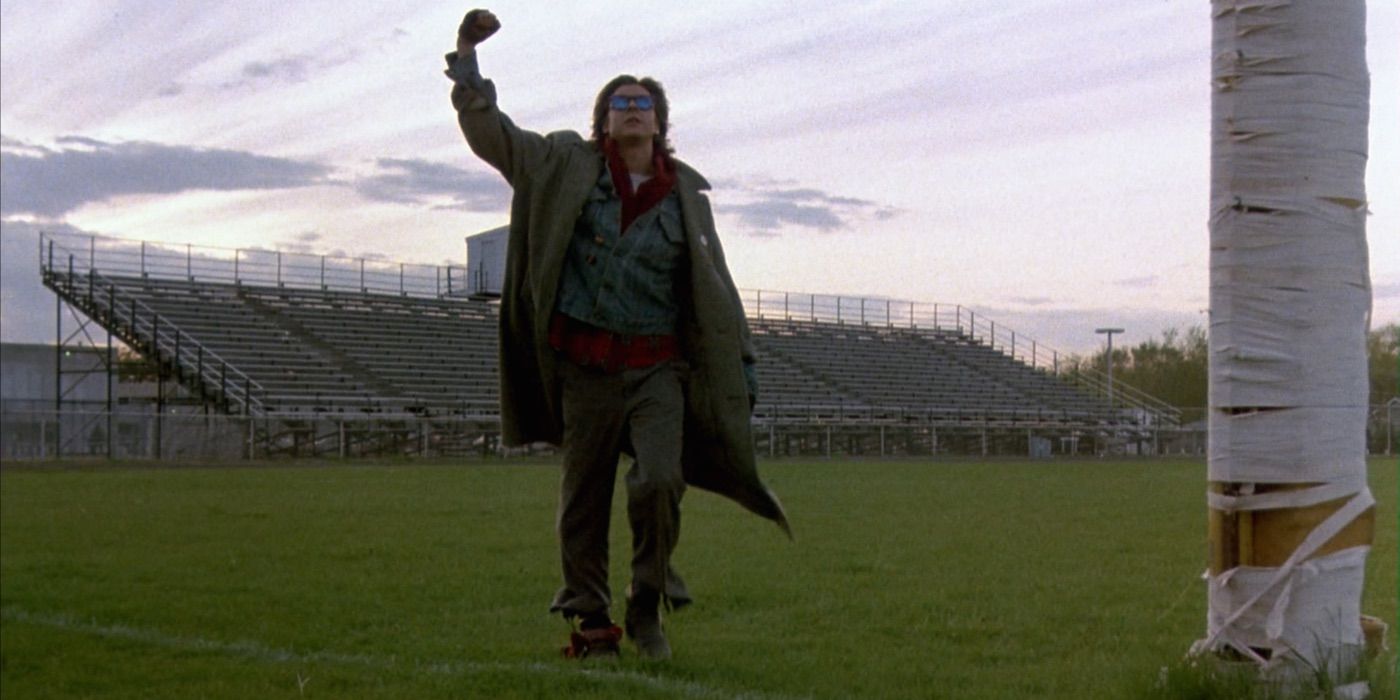
A go-to guy for Hollywood soundtracks, Keith Forsey churned out some of the most notable songs for '80s movies. Approached by the studio to write the Breakfast Club soundtrack, Foresy spent time watching the actors on set before committing.
Inspired by the scene in which Brian asks the group if they'll still be friends after detention, Forsey wrote the now iconic song "Don't You (Forget About Me)".
Originally, Bryan Ferry of Roxy Music was approached to sing it before Billy Idol, who later recorded his own version.
Luckily, an offer to Chrissie Hynde of the Pretenders would lead to the recommendation of Simple Minds' frontman Jim Kerr, Hynde's husband.
Simple Minds would agree to the song, though initially there was hesitation over the band not writing their own lyrics.
12 The fired actress vs Molly Ringwald
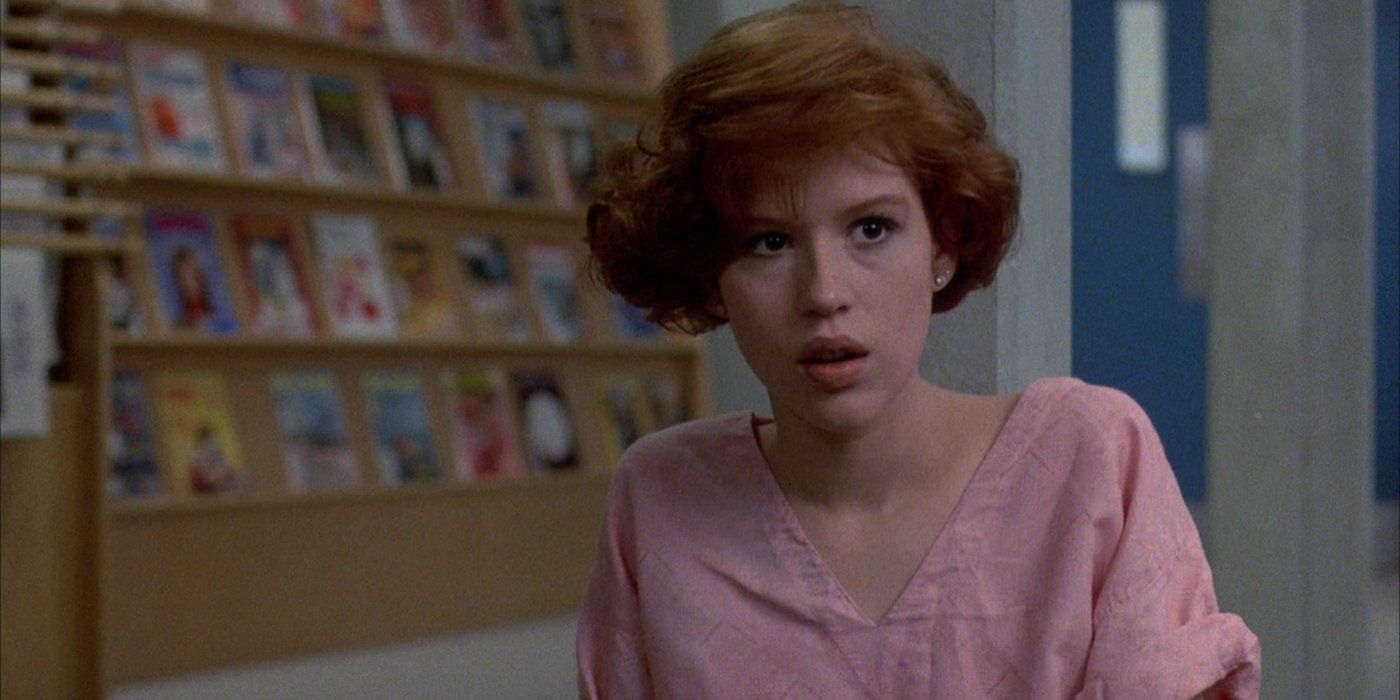
As a screenwriter, Karen Leigh Hopkins has writing credits in films such as Stepmom and Because I Said So, but prior to her writing career, she landed what was supposed to be her breakout role in The Breakfast Club.
Recalling her banishment from the film, Hopkins was supposed to play a P.E. teacher visiting the school for a synchronized swimming practice.
Later it would be revealed that the role was cut due to a revealing scene, which Ringwald and Sheedy heavily protested, though Hopkins remembers no such scene.
According to casting director Jackie Burch, Hopkins' firing may have been over more than just that scene. Instead of working around the scene, Ringwald allegedly wanted the actress let go.
11 A Remake Was In the Works
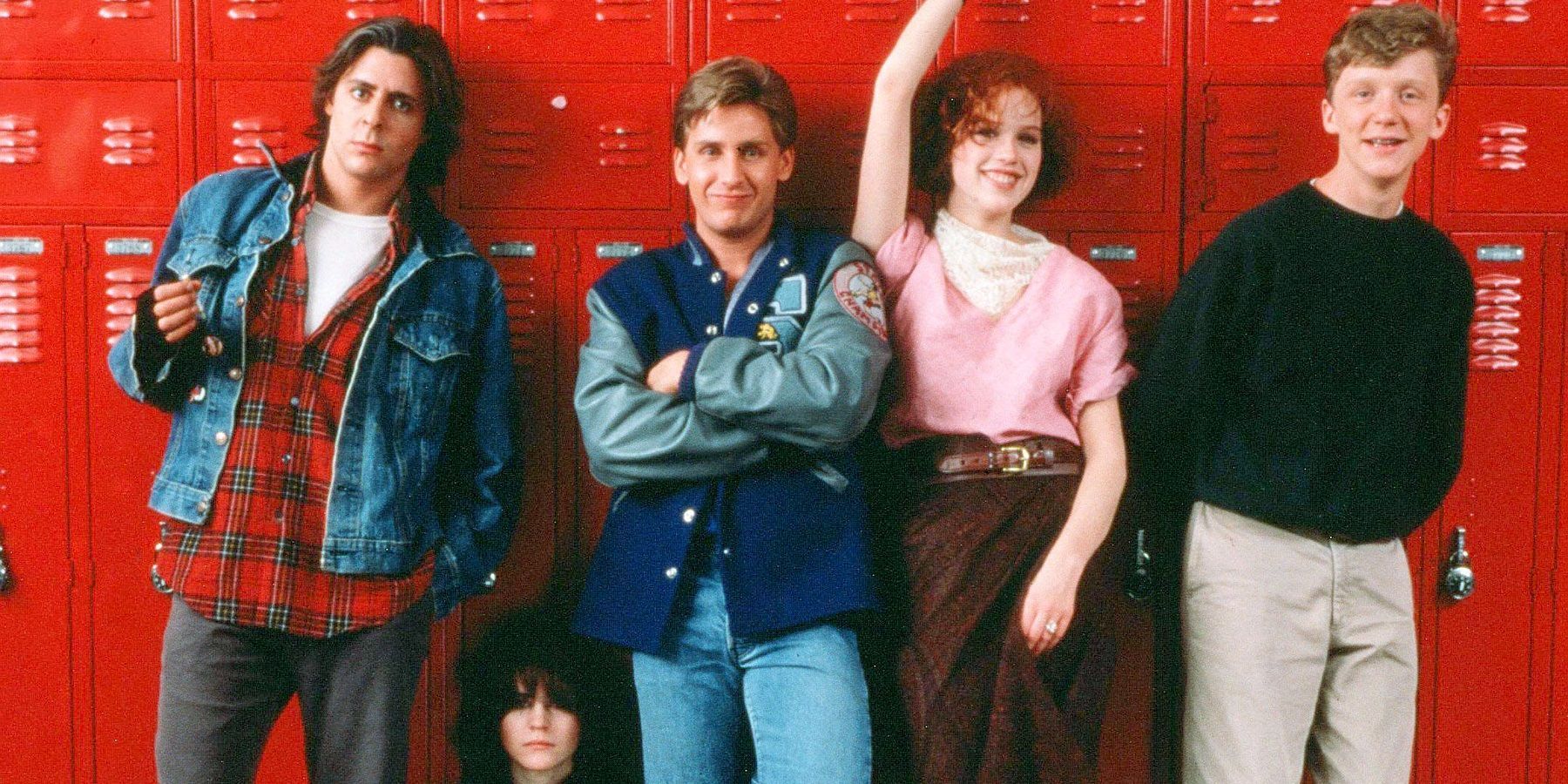
Set inside a singular location, The Breakfast Club's cast of five - the rebel, the princess, the basket case, the brain and the jock - pitted high school's seemingly contrasting cliques together in an accepting representation of teenage angst that would become a seminal work in the teen movie category.
With its generation-defying themes, a remake was sure to be on the minds of Hollywood executives and in 2008, reports began surfacing of a new version of the film, set in Chicago's O'Hare airport.
Entitled Bumped, the film would follow a cast of twenty-somethings, which would included a corporate shark, a musician, and a flirt.
The movie was set to be directed by Anna Mastro from a script by Lizzy Weiss, though interference from the Writers Guild of America strike of 2007-08 eventually led to the film's demise.
10 Ally Sheedy Didn't Like Allison's Makeover
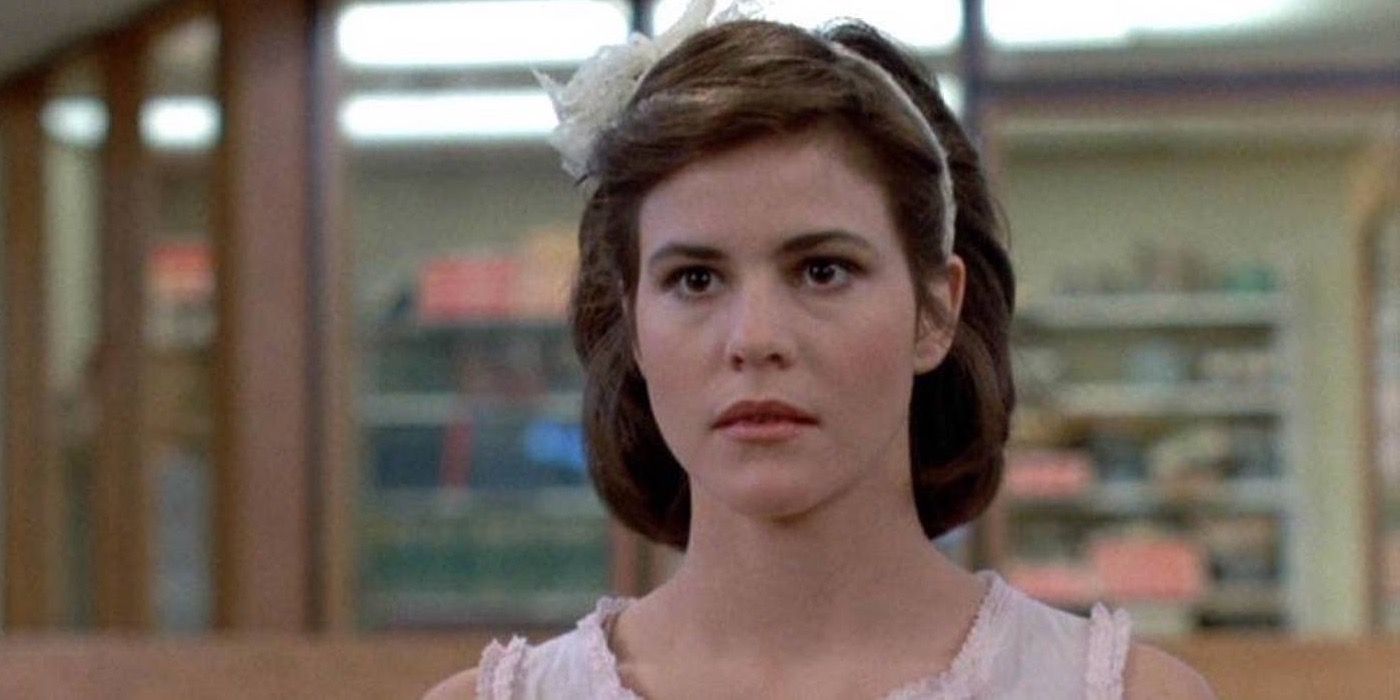
Speaking her first lines thirty-three minutes into the film, Allison Reynolds was the quiet loner of the group who was prematurely labeled a Basket Case for her darkly colored clothes.
From her school lunch of a Pixie Stix and Cap'n Crunch sandwich to her non-conformist attitude, Ally Sheedy spoke to Elle Magazine about her character, though there was one scene in particular she didn't remember so fondly.
In a pivotal sequence, Claire gives Allison a makeover, removing her hair from her eyes and replacing her edgy look for a brighter ensemble.
The drastic change catches the eye of the jock Andrew Clark, but Sheedy didn't agree with the transformation. In her eyes, her character didn't need a dramatic new look to appear beautiful, which made it an unnecessary sequence that could've been removed altogether.
9 An Early Draft of the Screenplay Was Found in a High School
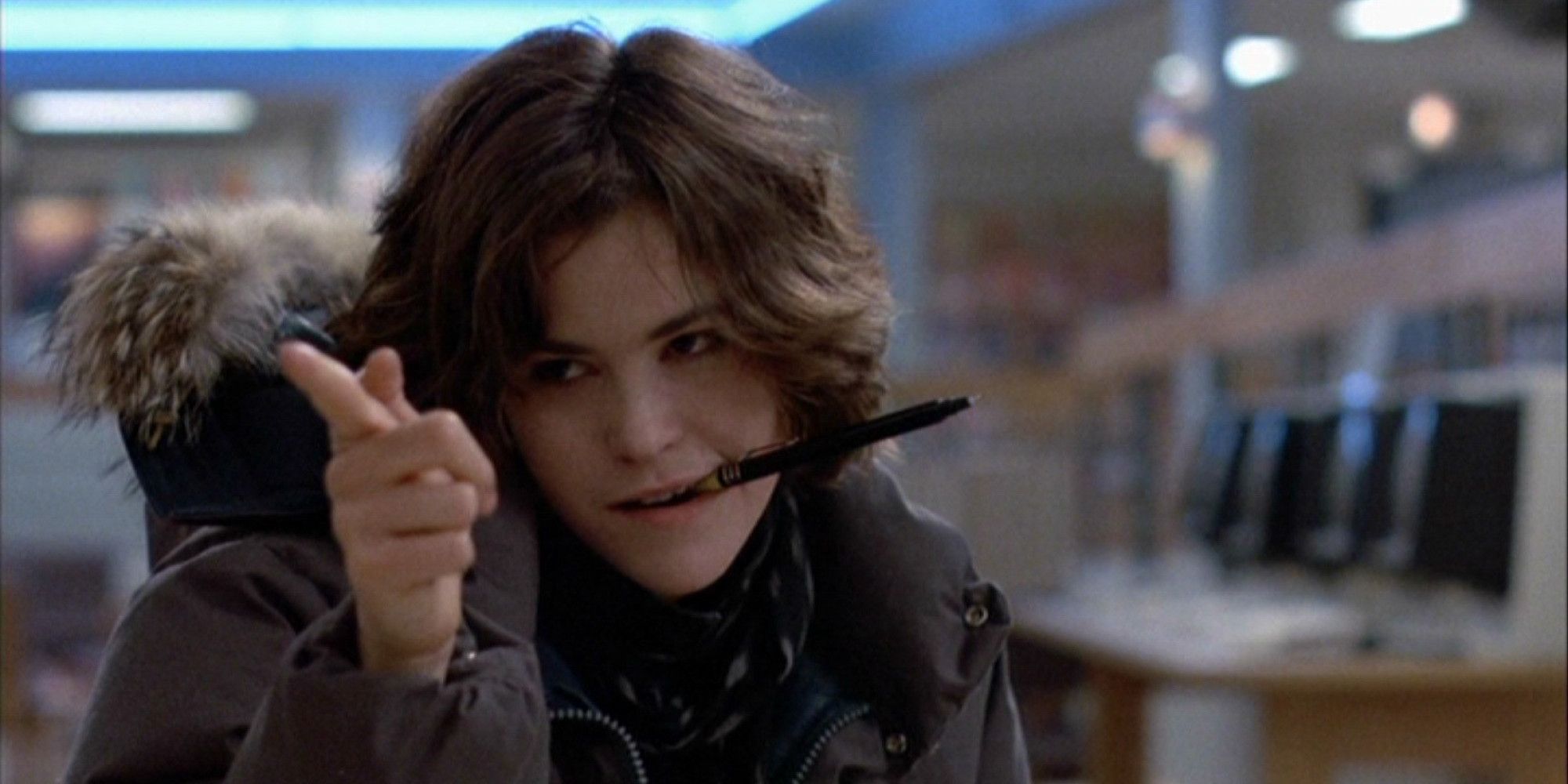
If The Breakfast Club is considered a milestone in the development of teenage dramas, then an original manuscript would understandably be the holy grail of souvenirs from the set. In 2015, that's what Ken Wallace, the superintendent for the Maine Township High School District 207 in Illinois, found while sorting through some old files.
Dated September 21, 1983, the script was discovered inside the shuttered Maine North High School where much of the movie was filmed.
While preparing for a move to a building next door, the unexpected discovery revealed a few new revelations about the film, including that Universal had agreed to rent out the school for $48,000 during the time of production.
As a now iconic piece of film history, Wallace has stated that he plans to preserve the script for future generations.
8 The Dance Scene Was Almost Completely Different
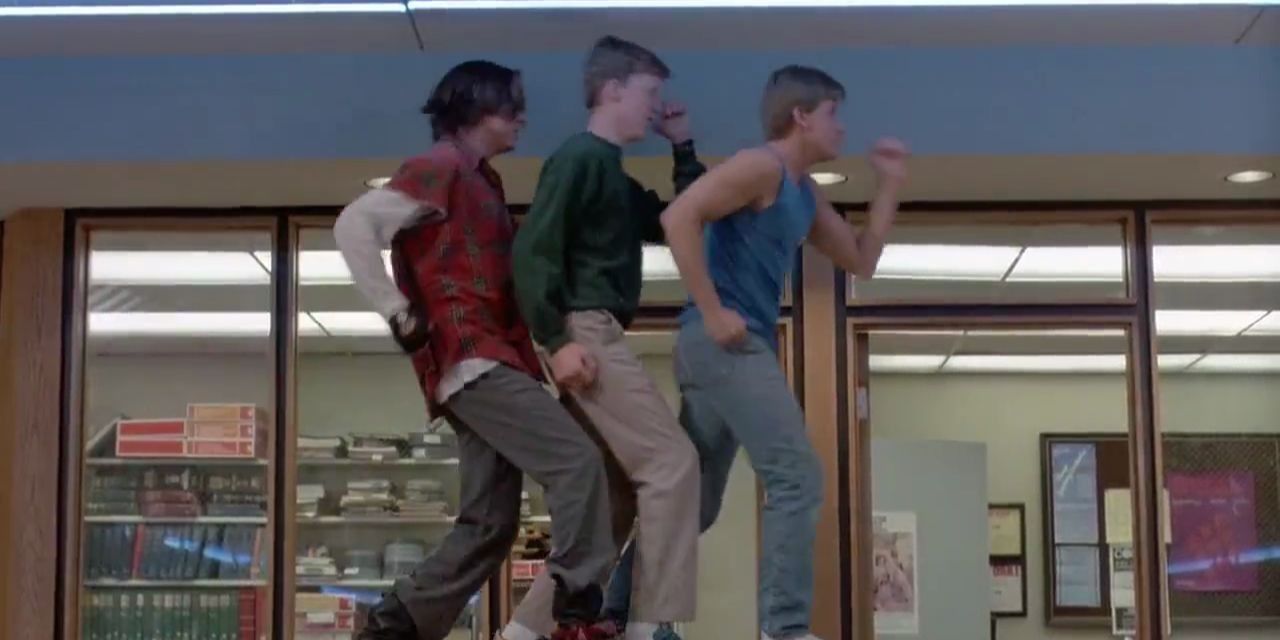
It's a classic dance sequence: Claire and the rest of Shermer High's Saturday detainees let loose in the library in a moment of spontaneity to Karla DeVito's "We Are Not Alone".
The scene is fitting as it forgoes each character's differences for a moment of unity, but according to one cast member, the scene was almost completely different.
Since her teenage years, Molly Ringwald has come out of her shell. In her spare time, she works as a jazz musician and writes an advice column for the Guardian, but when asked by Time about her most embarrassing Breakfast Club moment, she revealed she never wanted to do the dance sequence.
In the original script, only Claire dances.
When Ringwald came to Hughes about her insecurities as a dancer, he revised the scene to have all the cast join in.
7 Judd Nelson Was Almost Fired
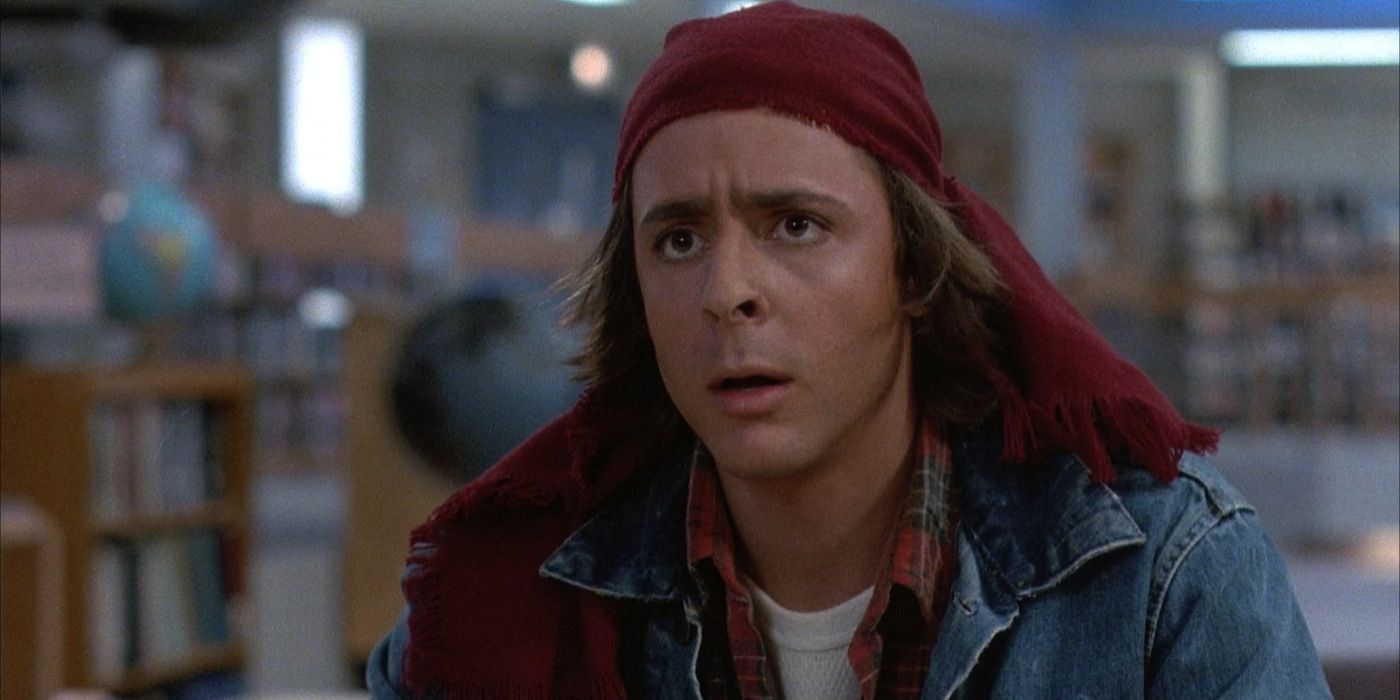
Given considerable rehearsal time before takes, Judd Nelson remembered collaborating with John Hughes to bring truthfulness to his portrayal of the rebellious and victimized character of John Bender.
At 24 years of age, Nelson was the oldest of his castmates, but his adamant method-acting approach to his character became so troubling that he developed a heated rivalry at times with Hughes, who nearly retaliated by firing him.
Encouraged to improvise while filming, Nelson played into Bender's no-rules, all-fun personality by provoking his co-stars.
Ringwald, in particular, was the butt of her co-star's jokes.
One such joke, Ringwald recalled, was joke mocking her father's blindness. Although the actress admitted to not being offended, Hughes was extremely protective and it nearly cost Nelson his most iconic role.
6 It Was Originally Much Longer
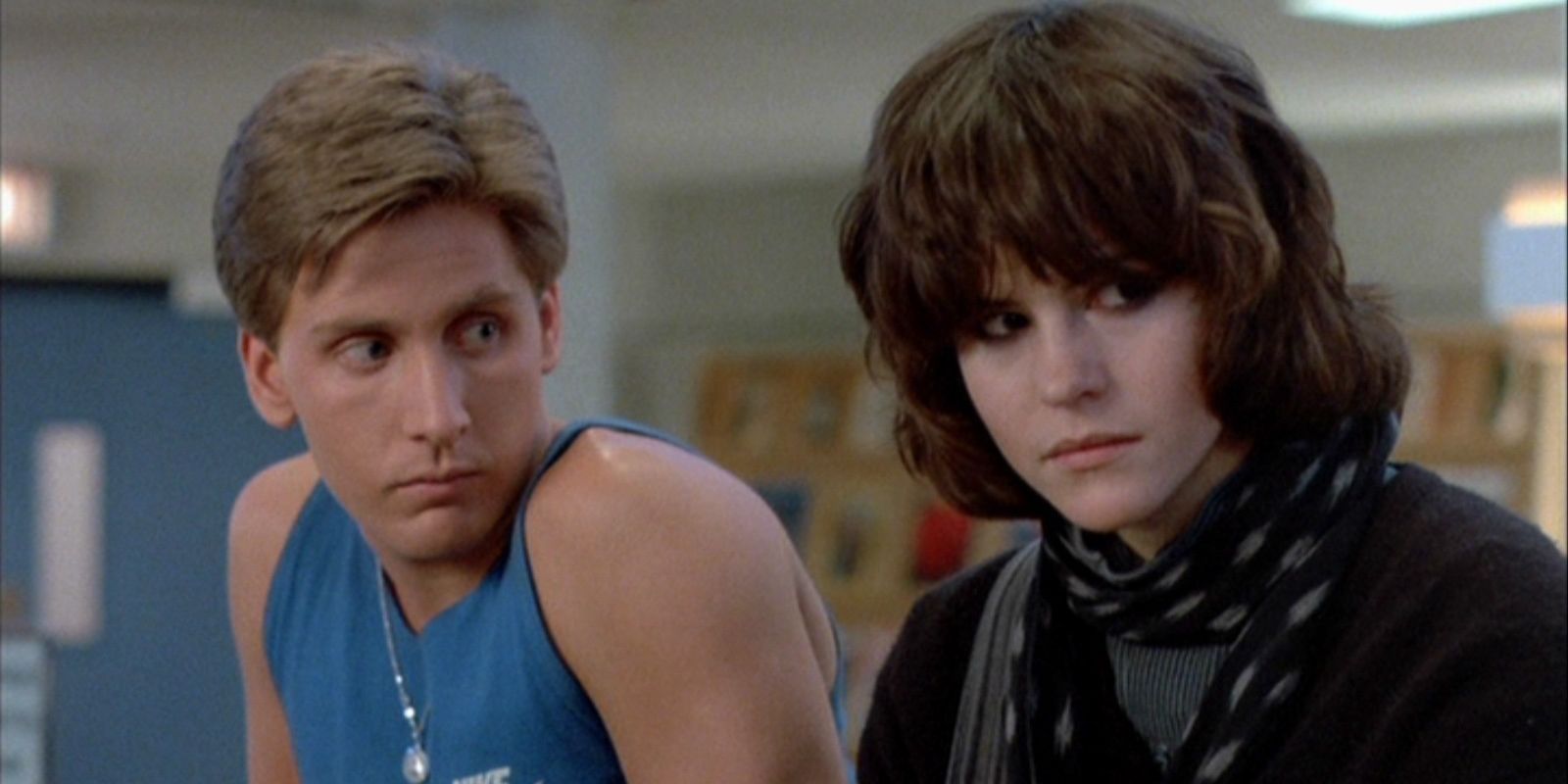
In a 1999 oral history of The Breakfast Club's production, the now-defunct Premiere magazine revealed a number of truths behind the teen angst drama.
After approaching Universal Pictures to direct The Breakfast Club as his directorial debut, Hughes was asked to move forward with Sixteen Candles instead. According to Premiere, when time came for filming to commence, the studio asked Hughes to trim the film from a two and half hour epic to a much shorter run time.
With the deletion of many scenes, audiences reportedly missed out on many notable moments, including a wacky dream sequence where Ally falls asleep, and a much steamier seven minutes in heaven scene between Claire and Bender.
According to Hughes, he owned the only copy of the movie's director's cut, though little evidence of its existence has been shared with anyone.
5 Emilio Estevez's on-set discomfort
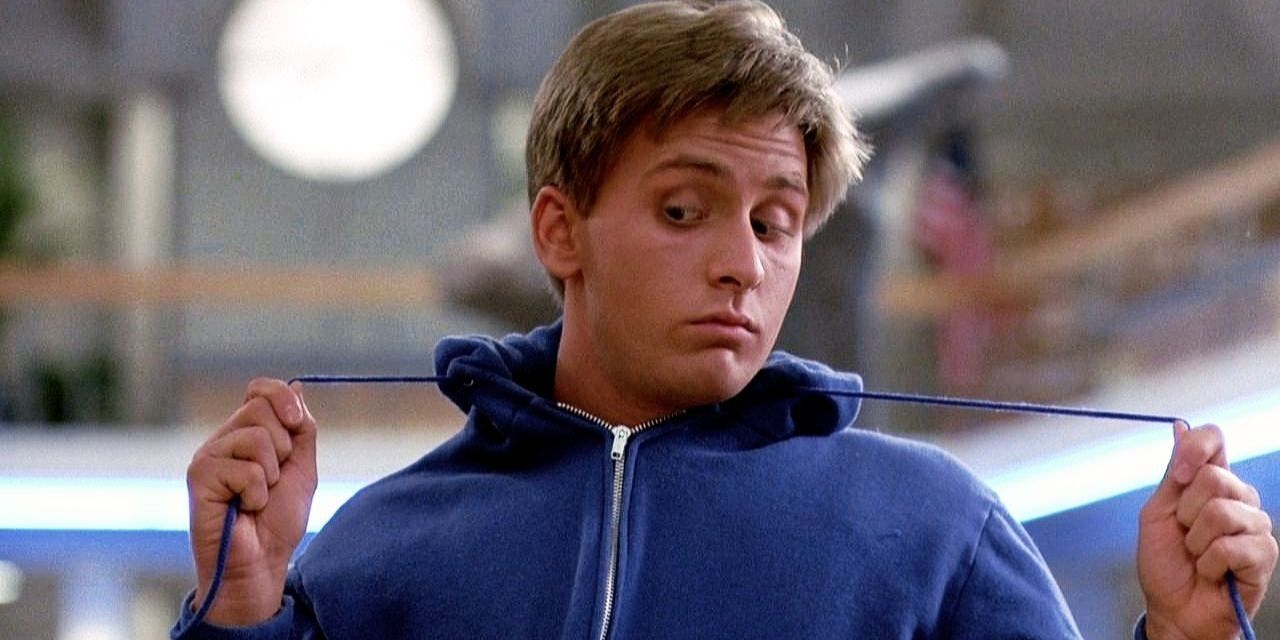
As the second recurring adult figure of the film, John Kapelos only had two scenes as Carl the Janitor. While Kapelos would have little screen time, he took his role quiet seriously, leading to a feud between him and star Emilio Estevez.
According to Kapelos, the bad blood between the two began when Kapelos was trying to film a scene while Estevez and Nelson were trying to make him laugh. Angered by their lack of seriousness, Kapelos referenced the real life heart attack of actor Martin Sheen by telling the pair they "would’ve been great on the set of Apocalypse Now" during the time of Martin Sheen's heart attack, watching him wince in pain as they goofed around.
Unbeknownst to him, Estevez was Sheen's son, making the rest of their time together very uncomfortable for both.
4 Brian's Social Security Number
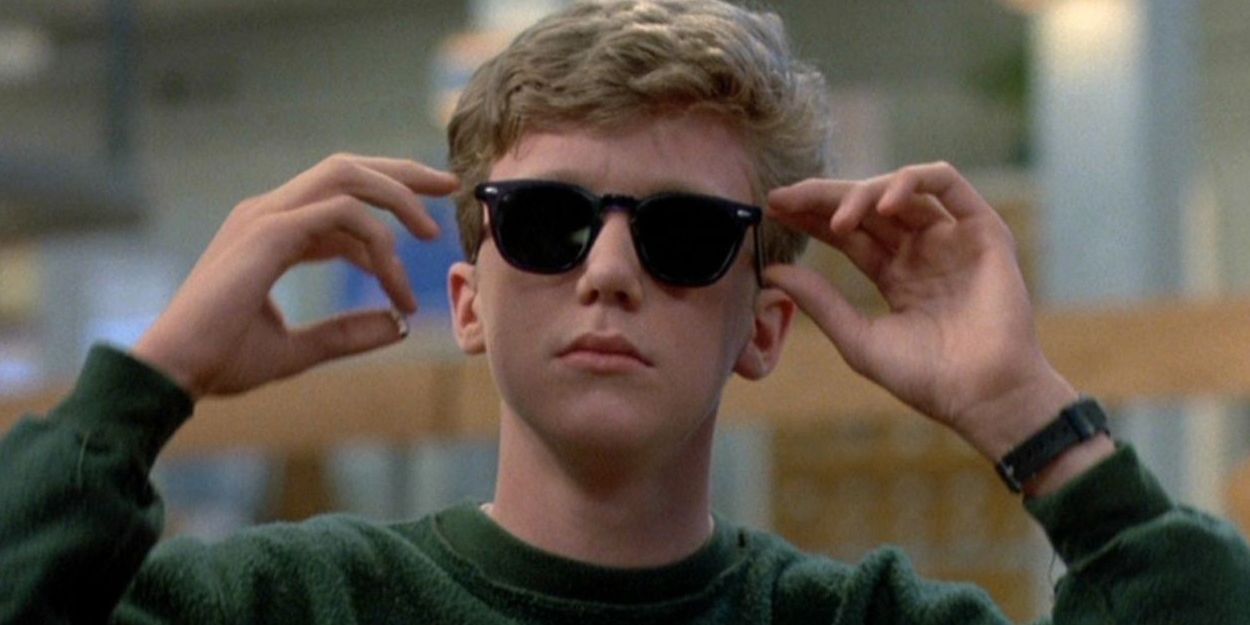
Inspired by Glenbrook High School in Glenview, Illinois, where John Hughes spent much of his teenage years, Shermer High was the fictional setting of the two story library where the entirety of The Breakfast Club took place.
Shot on location in the abandoned Maine North High School in Des Plaines, Illinois, the real world location has also served as a setting for the Hughes-directed film Ferris Bueller's Day Off.
Although Shermer is established as being located in Illinois, not every character is from the state.
In one particular scene in which Allison filches Brian's wallet, she rattles off information from his ID, reciting his height, weight and date of birth, but the most interesting fact given is his social security number beginning in the numbers "049," which is only possible if he was born in the state of Connecticut.
3 Molly Ringwald Criticized the Movie's Treatment of Female Characters

Earlier this year, in light of Hollywood's recent sexual allegations, Molly Ringwald penned an honest essay in the New Yorker, which observed some of the most beloved films of the '80s, calling them out for their inappropriate depiction of female characters.
Speaking specifically on The Breakfast Club, Ringwald referred to a scene in which John Bender hides from a teacher by crouching beneath a desk next to Claire. In the scene, Bender looks up Claire's skirt before touching her inappropriately.
Writing about the subject of female subjugation, Ringwald expressed concerns over similar scenes in beloved movies that re-enforce negative acts towards women. Although she remains a fan of the film, the scene made it hard for her to explain Bender's actions to her daughter, who has since become a fan of the movie.
2 John Hughes Considered Writing a Sequel
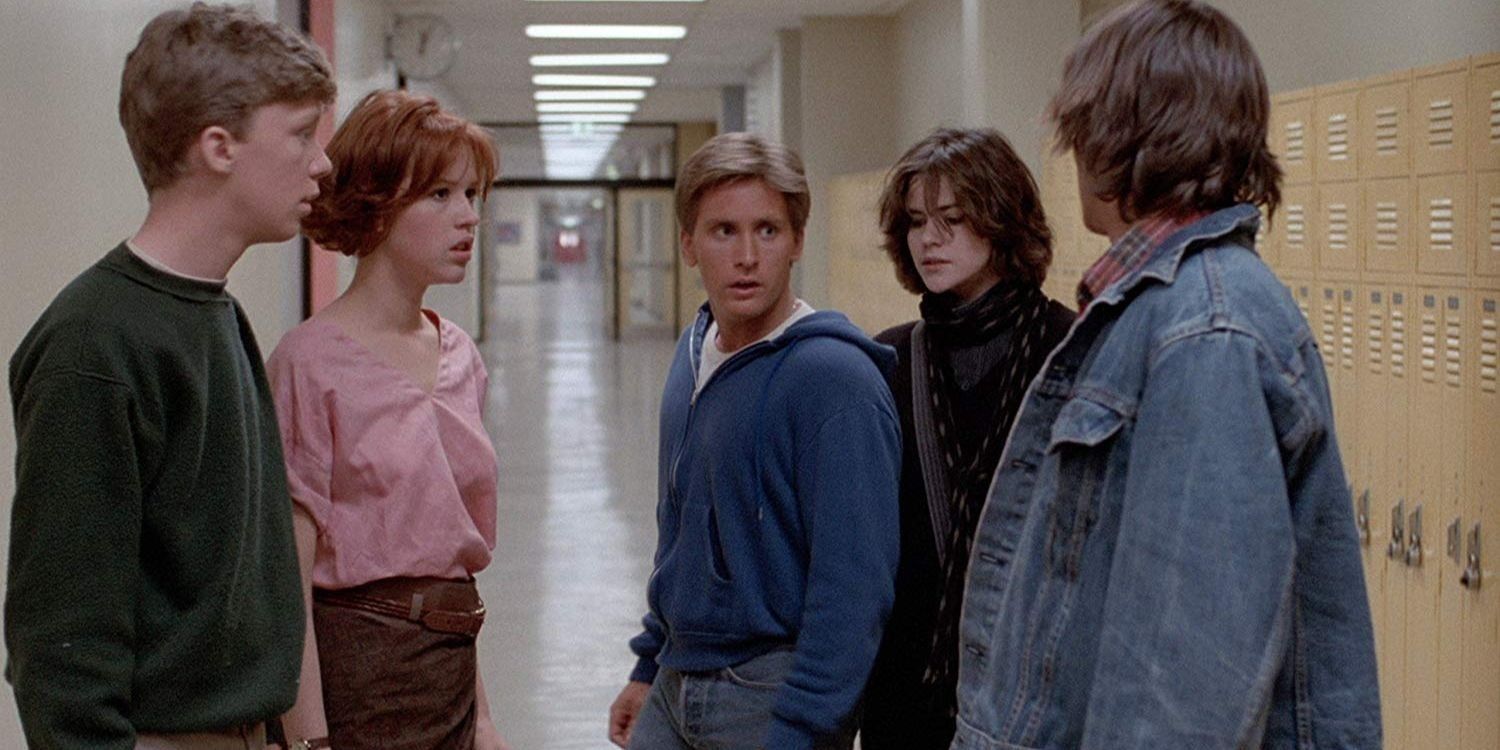
Leaving a lasting impression on the generations that followed, the influence of John Hughes' detention-dwelling students can be seen in many teen characters since. Tearing down the wall of high school politics, The Breakfast Club allowed its characters to reveal the emotional angst and familial issues that lie at the heart of so many coming-of-age stories.
Naturally, talk of a sequel weighed heavily on Hughes' mind after the success of his sophomore feature.
As for filming a follow-up years after the fact, the director expressed little interest, though he did have plans of revisiting the characters through prose.
According to Hughes, the movie's cast had "no excuse that could ever put them in the same room ever again," though he did consider writing a second story and releasing it online.
1 The Iconic Poster Was Shot By Renowned Photographer Annie Liebovitz
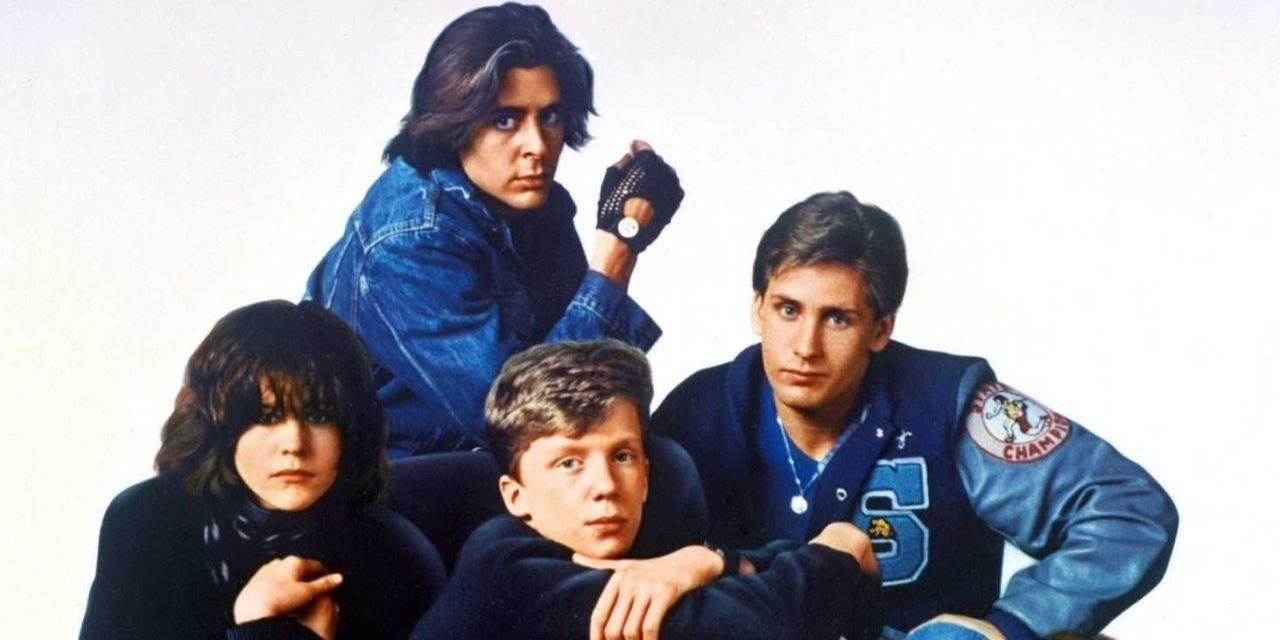
Before viewing The Breakfast Club for the first time, the juxtaposing personalities of Shermer High were already cemented into the audience's minds thanks to the now iconic imagery of Annie Liebovitz, a renowned portrait photographer with a history of shooting some of Hollywood's biggest personalities.
Huddled together in front of a blank, white background, the five archetypes of the cast were perfectly represented in a singular group shot.
Ally Sheedy remembered spending two full sessions with Liebovitz, who's most known for photographing John Lennon on the day of his assassination. Although the cast would shoot various publicity stills for the film, the image with Ringwald lying down on her side in front of her cast mates would be the only one to serve as a poster.
---
Do you have any more trivia to share about The Breakfast Club? Leave it in the comments!
from ScreenRant - Feed https://ift.tt/2Cd6rfB


0 Comments